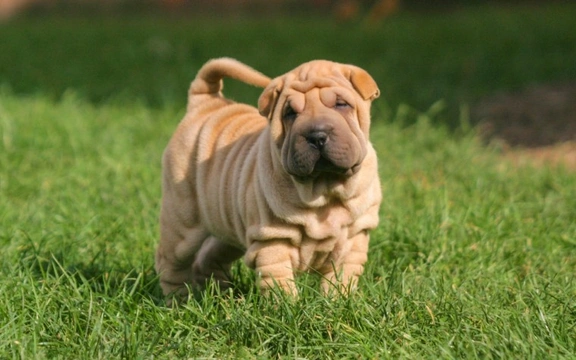
Five dog breeds with unusual coats
Dog coat types come in almost as many different varieties as you can imagine, much a human hair does – and everything from length, texture, colours, patterns, layers, curl and shedding can vary from dog to dog. For some dog breeds, their coats are one of their most defining traits, and even given the sheer variety to be found between the coats of average dogs, there are some dog breeds whose coats are very unusual compared to the sort of norms we tend to see out and about every day.
What makes a certain type of coat develop in a certain way can vary – going right back to the origins of dogs as a species, the evolution of different landrace dog types and eventually, breeds, the coat type and style is dictated by a range of factors. These include things like the climate and environment the breed is native to or was developed in, working roles the dogs might have performed, selective breeding for specific traits, and even genetic mutations that can develop in different dog breeds over time.
However, there is a certain degree of uniformity to the type of coats most dogs have, in that we rarely see a dog whose coat immediately makes us think “that’s unusual” – but there are some exceptions!
Read on to learn more about five funky dog breeds with weird and distinctive coat types that you might not have heard of.
The curly coated retriever
The curly coated retriever is not usually the first dog breed that most people bring to mind when they think about retrieving dog breeds, but this is in fact one of the oldest and longest established retrieving breeds of them all.
Curly coated retrievers have a curly coat, as you might expect – but the tightness of the curls themselves are what makes this breed so unique. Even compared to other breeds with curled coats like the poodle, the curly coated retriever has very closely coiled, dense curls, which lie very close to the body and give the dog’s coat a bumpy feeling when you stroke them.
A coat of this type is both insulating and water repellent, which helped the breed with water retrieving work in their historical working roles.
The Hungarian puli
The Hungarian puli is not a hugely common sight within the UK, although they are becoming gradually more numerous over time, and the first time most of us see a puli in the flesh often results in a sharp double-take!
For those of us over a certain age that remember the children’s TV show The Magic Roundabout and Dougal the dog, the puli looks something like a cartoon character brought to life – and all thanks to their coats!
The Hungarian puli puppy is born with a fairly normal if rather fluffy short coat, but as the dog gets older, the coat grows very long and forms into cords or dreadlocks, which need quite a lot of maintenance to keep clean and in good condition.
Whilst the puli is not the only dog breed to develop a naturally dreadlocked coat, it is one of the better-known ones.
The Chinese crested
The Chinese crested dog breed is one that most of us bring to mind as the best-known hairless dog breed – which is of course distinctive in itself, even if it doesn’t strictly meet the criteria of having a coat at all!
That said, most Chinese crested dogs have a little short, fine hair somewhere on their bodies – and dogs of the breed come in two varieties, one of which is not actually hairless at all.
This is the powderpuff Chinese crested, which is not bald but in fact has long, straight and silky hair, more similar in texture to human hair than the average dog coat.
Both hairless and powderpuff Chinese crested pups can appear within the same litter too!
The Bergamasco
The Bergamasco dog is one many dog lovers in the UK have never seen in the flesh, and this breed has perhaps one of the most unusual coat styles of them all. As is the case for the Hungarian puli, puppies are born with regular fluffy coats, but as the dog reaches maturity, they form into irregular cords or dreadlocks.
However, the Bergamasco’s coat cords tend to be a lot less uniform and somewhat more unkempt-looking than that of the puli, and the Bergamasco coat contains three distinct types of hair that enable the cords to form, which are known as dog hair, wool, and goat hair respectively – producing a very unique coat style and general appearance too.
The Shar pei
Finally, the Shar pei is a dog breed that has very loose, wrinkled skin, which results in the coat and skin appearing to form loose waves across the body, and which often makes it look as if the dog is wearing an outfit that it too large for them and that they have yet to grow into!
The Shar pei coat is very short and harsh – which means that it is slightly rough to the touch, and the end of each hair forms a point, which can feel prickly or sharp if rubbed the wrong way. Special care needs to be taken of the Shar pei’s coat and skin to keep the wrinkles clean and free of dirt and debris that can cause rubbing and sores, which can be quite time consuming for their owners.



